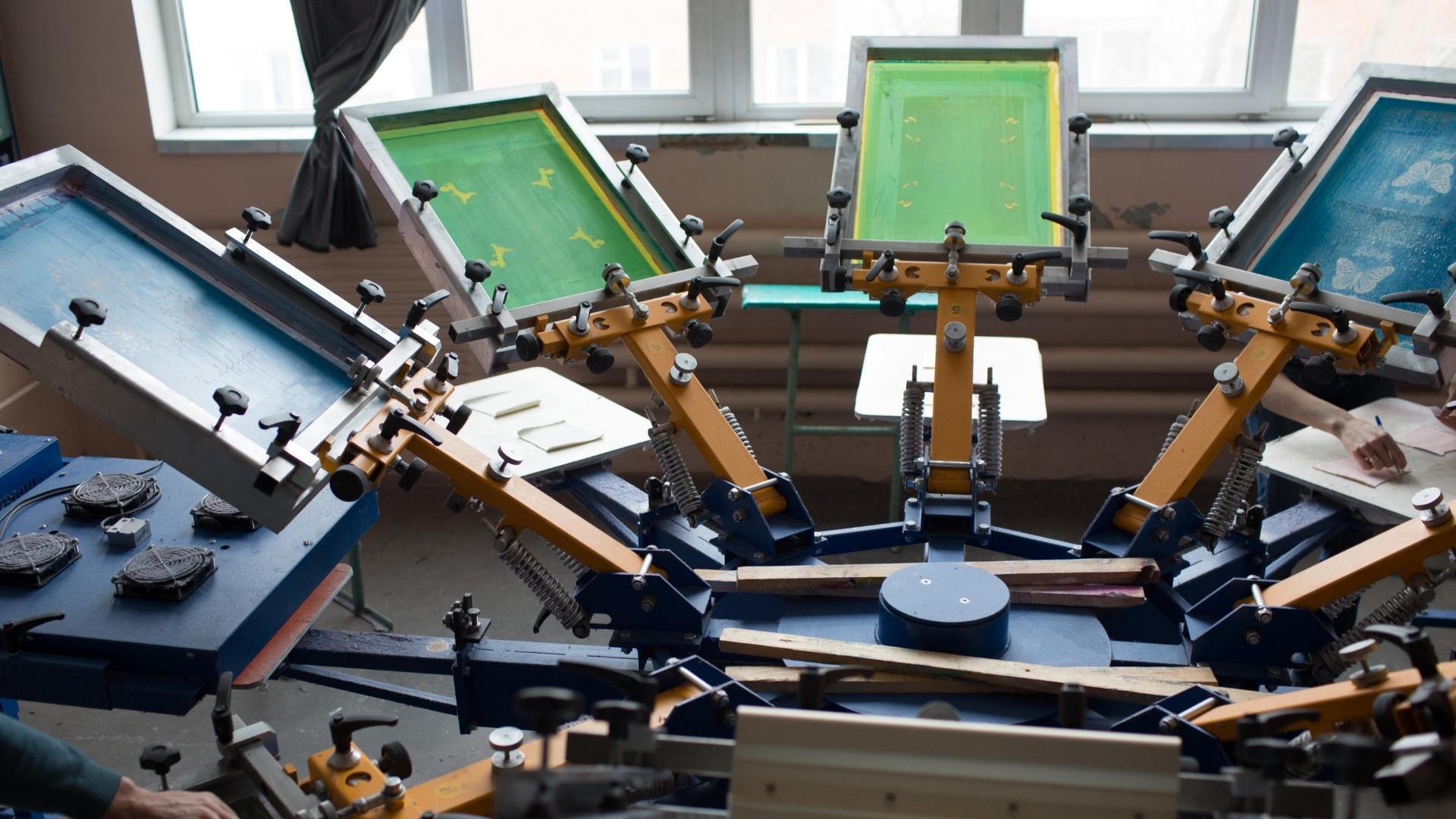ChatGPT said: 10:9 Design Company FAQs: answers to your top questions about their services
The Essential Guide to Understanding Screen Printing and Its Versatile Uses
Screen printing has an abundant background that dates back to ancient times, advancing into a sophisticated method used throughout various sectors today. This guide discovers the ins and outs of the screen printing procedure, describing its applications in advertising and marketing, fashion, and home design - 10:9 Design Screen Printing Texas. Understanding these fundamentals can open imaginative potential for both imaginative and industrial projects. The adhering to sections will certainly disclose important ideas and strategies to boost one's screen printing undertakings
The History of Screen Printing
Although screen printing has origins that map back centuries, its evolution shows the technological and artistic innovations of numerous cultures. Originating in old China, the method was originally utilized for enhancing fabrics and later infect Japan, where it became essential to Ukiyo-e woodblock printing. The method moved to Europe in the 18th century, where it obtained appeal amongst craftsmens and business printers. The development of image solution in the 20th century changed screen printing, enabling even more complex layouts and higher effectiveness. Artists like Andy Warhol further drove its popularity, using the tool to develop famous works that blended commercialism and fine art. By the late 20th century, screen printing had actually developed itself as a flexible technique, employed in style, marketing, and great art. Today, it proceeds to develop, incorporating digital technology and increasing its applications across different sectors.
The Screen Printing Process Explained
Screen printing transforms imaginative visions right into tangible layouts through a collection of accurate actions. An image is produced and then moved onto a screen, usually made of fine mesh fabric extended over a frame. A light-sensitive solution is applied to the screen, which is exposed to light, solidifying in locations not covered by the picture. After cleaning out the unhardened emulsion, a pattern is developed.
Next off, the screen is placed over the substrate, whether it be material, paper, or one more product. Ink is then pressed via the open areas of the pattern making use of a squeegee, transferring the style onto the substratum below. This process can be duplicated for multiple colors, requiring separate screens for each and every tone. Finally, the printed product is treated using warm to assure the ink adheres effectively, causing a resilient, vibrant design on-line.
Kinds Of Screen Printing Techniques

Furthermore, specialty methods, such as discharge screen printing, remove color from the material to develop softer prints, while foil screen printing uses metallic foil to accomplish a glossy coating (10:9 Design contact). Each method offers unique features, satisfying different imaginative needs and production ranges, ultimately broadening the opportunities within the screen printing domain
Applications of Screen Printing in Various Industries

Furthermore, the signage and advertising markets make use of screen printing for creating attractive screens and banners. This approach allows for bold colors and complex layouts that capture attention. In electronics, screen printing is utilized for using conductive inks to motherboard, important for element links. The home design market embraces screen printing to produce distinctive designs on textiles and wall art. On the whole, screen printing functions as an important tool across diverse fields, enhancing products with customized and visually appealing graphics.
Tips for Successful Screen Printing Projects
While carrying out a screen printing job, cautious interest to detail can considerably boost the last end result. First, choosing high-quality materials is vital; this includes the screen, inks, and substrates. Making use of ideal mesh matters can impact ink deposition and detail resolution. Preparation is equally crucial; extensive cleaning of displays and correct direct exposure times ensure crisp prints.
Next, exact registration is crucial for multi-color prints. Utilizing placement devices can assist accomplish accurate layering. In addition, screening prints on scrap materials prior to manufacturing assists determine potential issues without throwing away sources.

Regularly Asked Inquiries
What Products Are Ideal for Screen Printing on Textile?
Cotton and polyester blends are suitable for screen printing on textile because of their toughness and ink absorption. In addition, specialized materials like silk or canvas can produce unique textures and coatings, boosting the total style quality.
How Do I Tidy and Maintain Screen Printing Tools?
To clean up and preserve screen printing tools, one must on a regular basis wash screens with ideal solvents, check squeegees for wear, lubricate relocating parts, and store all things in a dry, dust-free environment to lengthen their life expectancy.
What Are the Environmental Impacts of Screen Printing?
Screen printing can have substantial environmental impacts, consisting of chemical waste from inks and solvents, water use throughout cleaning procedures, and energy intake. Environmentally friendly products and sustainable techniques are necessary for reducing these adverse impacts.
Can Screen Printing Be Done at Home Successfully?
Screen printing can be efficiently done at home with the appropriate materials and methods. Enthusiasts can create top quality prints, though success Continue relies on their skill degree, tools, and understanding of the process entailed.
What Are the Costs Linked With Starting a Display Printing Business?

Starting a screen printing company includes costs for devices, products, and work space. Initial expenses usually vary from a couple of hundred to several thousand dollars, depending on the scale, high quality of equipment, and preferred production capability.
Screen printing has an abundant background that dates back to old times, advancing right into an innovative technique used across various industries today. Another technique, rotary screen printing, uses cylindrical screens, official website assisting in constant printing on fabric rolls, thereby enhancing performance for large manufacturings. In addition, specialized methods, such as discharge screen printing, get rid of dye from the fabric to produce softer prints, while foil screen printing uses metal aluminum foil to achieve a glossy surface. In the fashion industry, screen printing is commonly used to develop vibrant layouts on garments, allowing brands to showcase their unique designs. Cotton and polyester blends are suitable for screen printing on material due to their sturdiness and ink absorption.